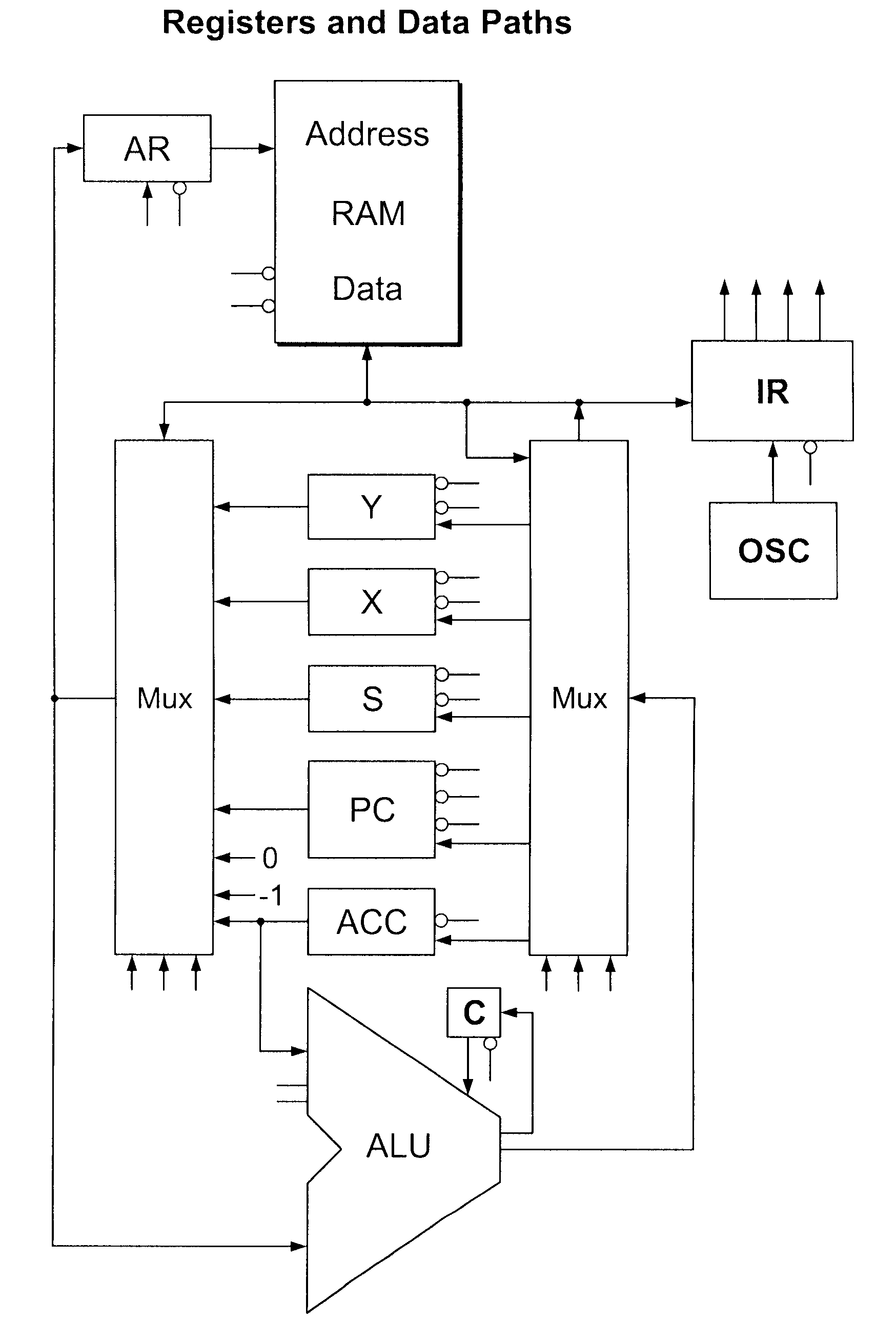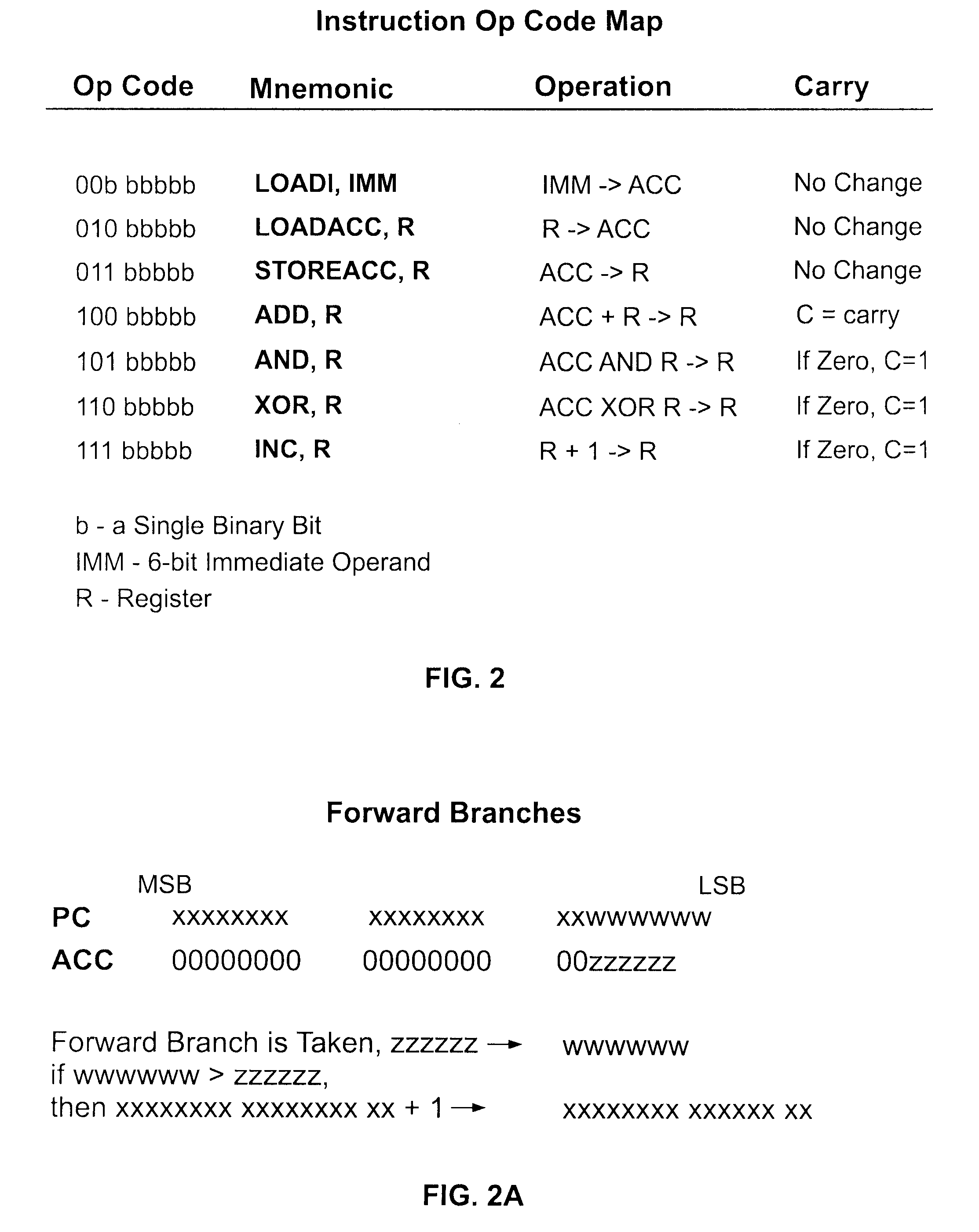Thread Optimized Multiprocessor Architecture
a multi-processor and architecture technology, applied in the direction of multi-processor architecture, multi-programming arrangement, instruments, etc., can solve the problems of limiting the application of very specialized applications, large time penalty, and rare maximum improvement, so as to increase the computer speed, and increase the instruction execution speed
- Summary
- Abstract
- Description
- Claims
- Application Information
AI Technical Summary
Benefits of technology
Problems solved by technology
Method used
Image
Examples
Embodiment Construction
[0137]The TOMI architecture of at least one embodiment of the present invention preferably uses the minimum logic possible to operate as a general purpose computer. The most common operations are given priority. Most operations are visible, regular, and available for compiler optimization.
[0138]In one embodiment, the TOMI architecture is a variation on accumulator, register, and stack architectures, as illustrated in FIG. 1. In this embodiment:
[0139]1. Like an accumulator architecture, the accumulator is always one of the operands, except for the increment instruction.
[0140]2. Like a register architecture, the destination is always one of the operand registers.
[0141]3. The accumulator and program counter are also in the register space and may therefore be operated on.
[0142]4. Three special registers auto-increment and auto-decrement and are useful for creating stacks and streams of input and output.
[0143]5. All instructions are 8-bits in length, simplifying and speeding instruction ...
PUM
 Login to View More
Login to View More Abstract
Description
Claims
Application Information
 Login to View More
Login to View More - R&D
- Intellectual Property
- Life Sciences
- Materials
- Tech Scout
- Unparalleled Data Quality
- Higher Quality Content
- 60% Fewer Hallucinations
Browse by: Latest US Patents, China's latest patents, Technical Efficacy Thesaurus, Application Domain, Technology Topic, Popular Technical Reports.
© 2025 PatSnap. All rights reserved.Legal|Privacy policy|Modern Slavery Act Transparency Statement|Sitemap|About US| Contact US: help@patsnap.com



